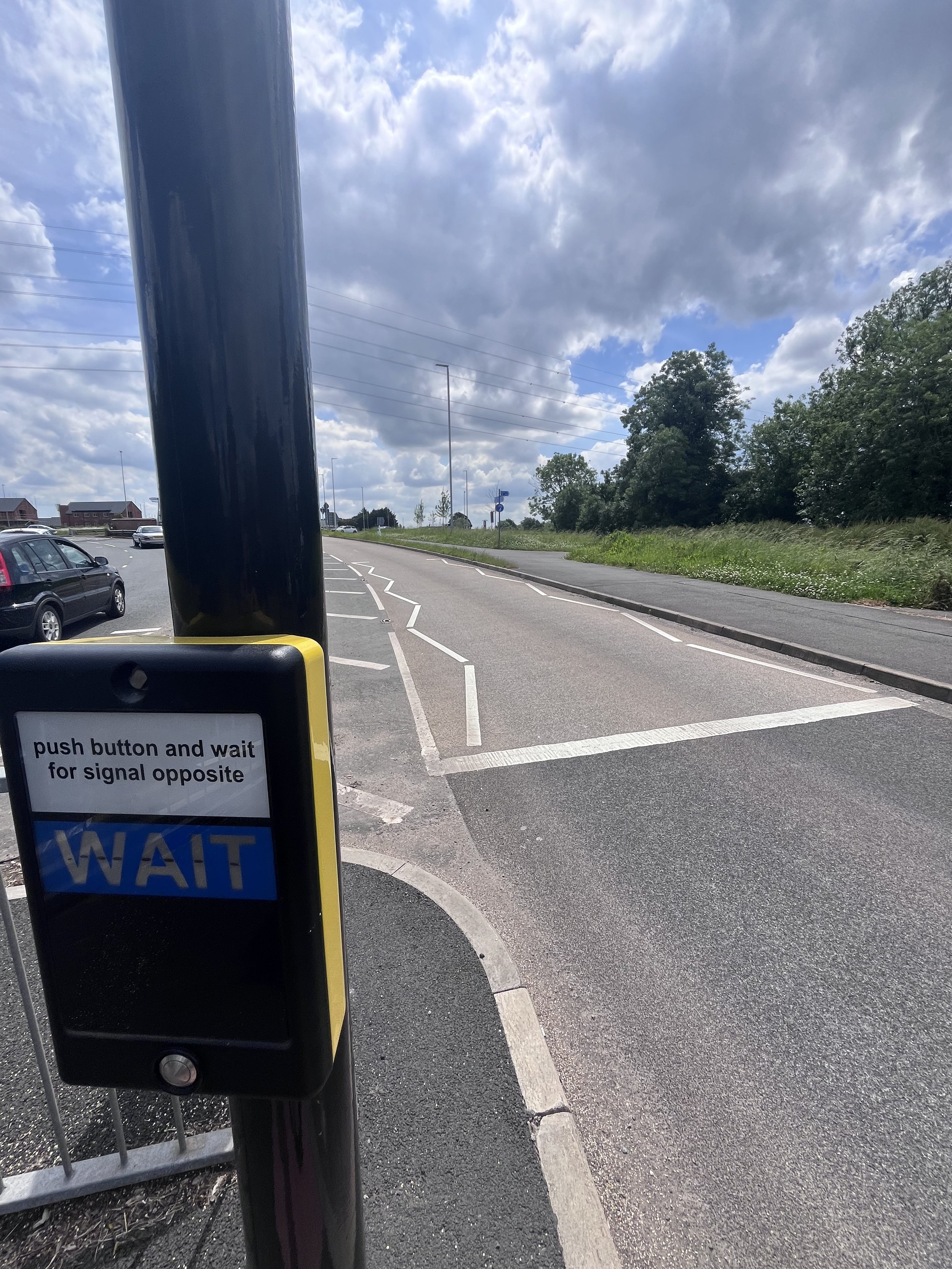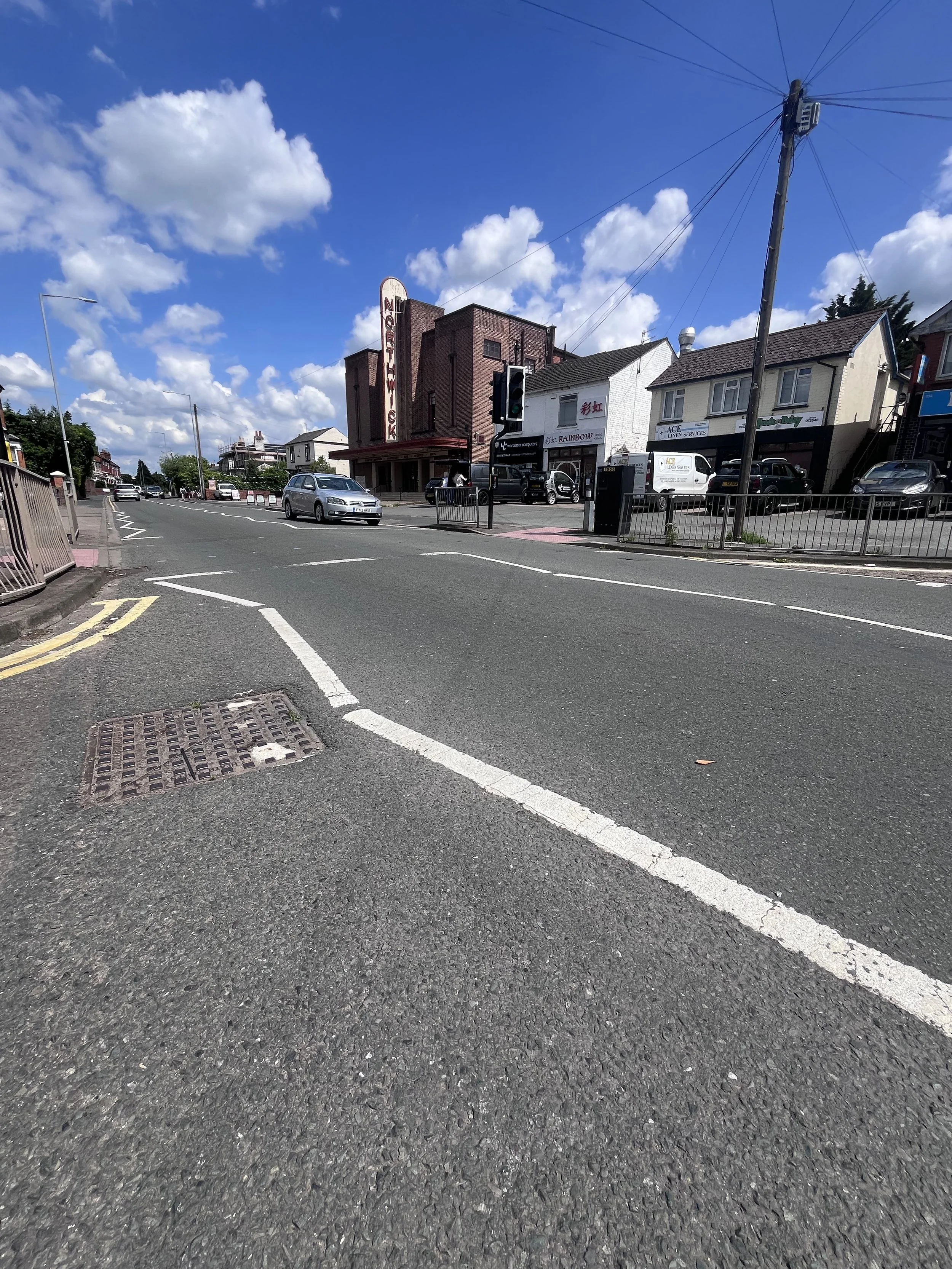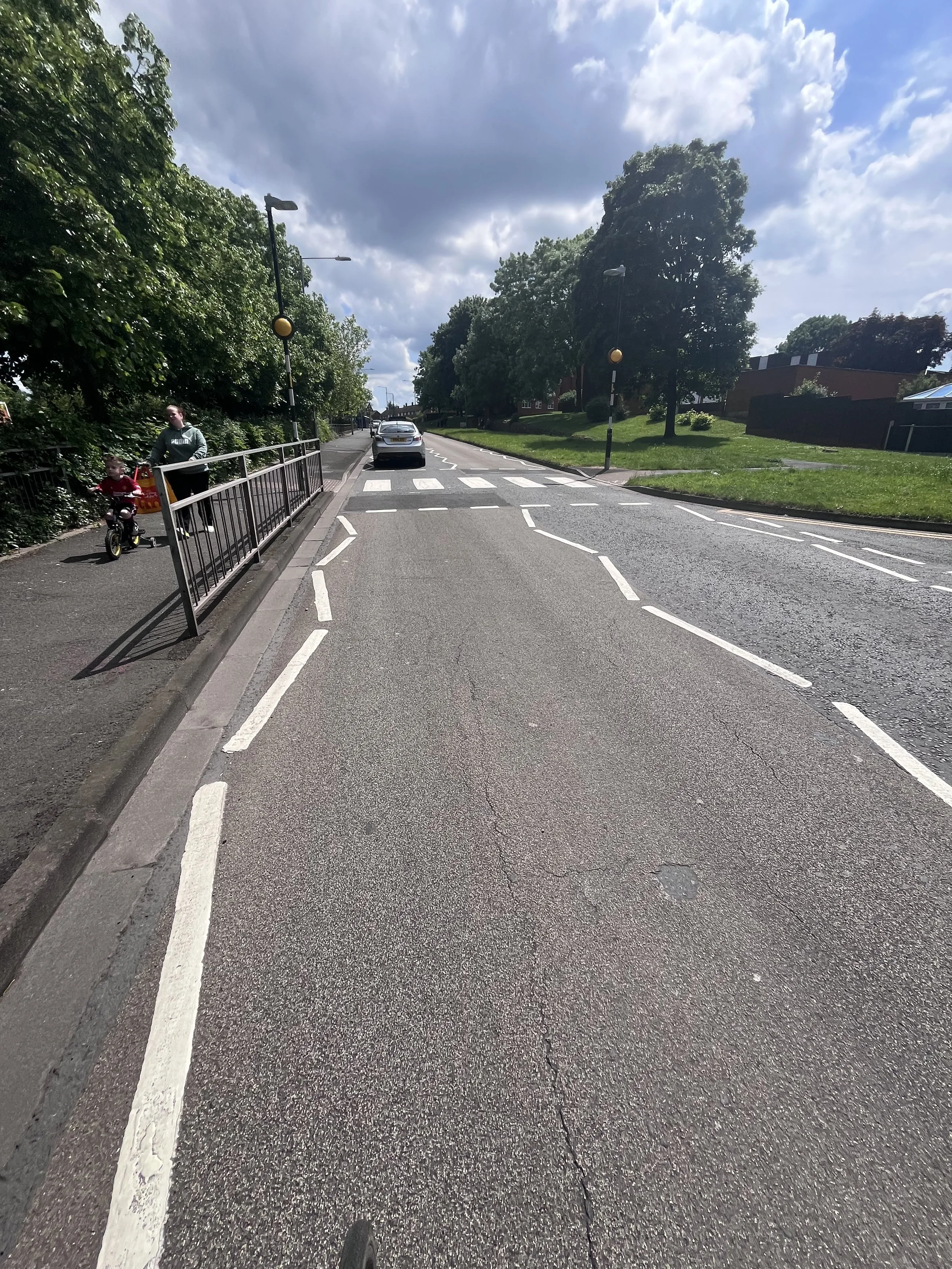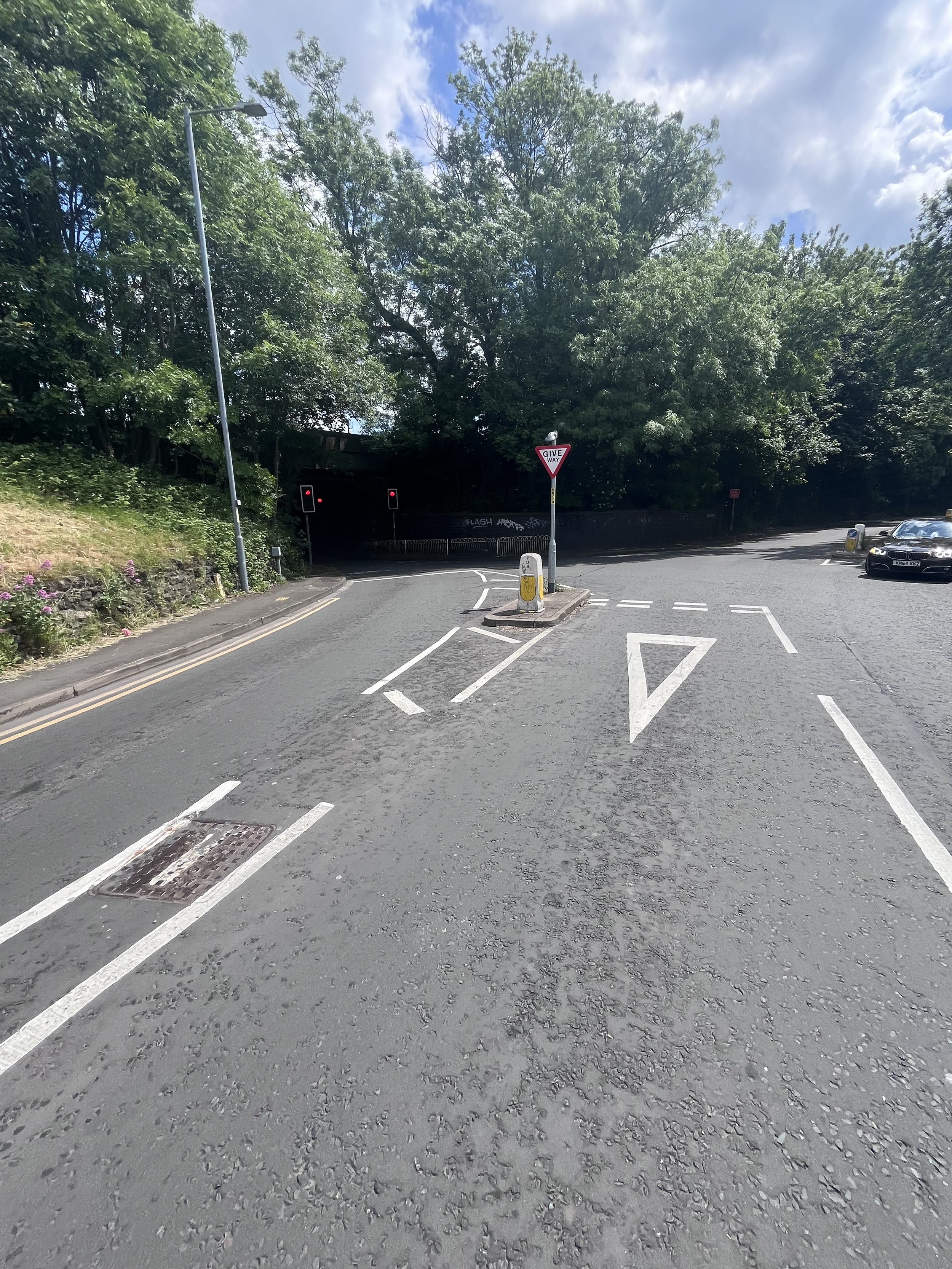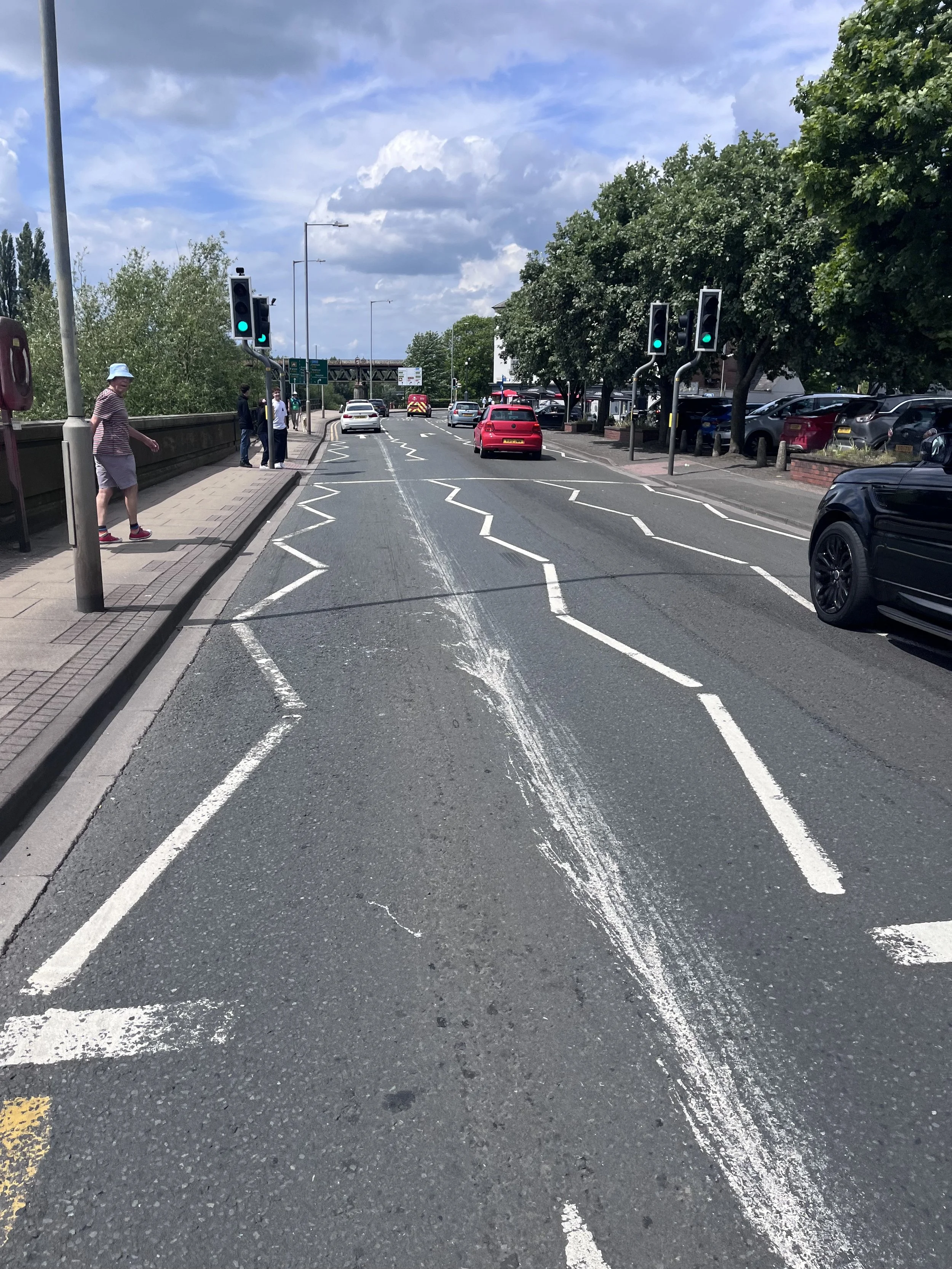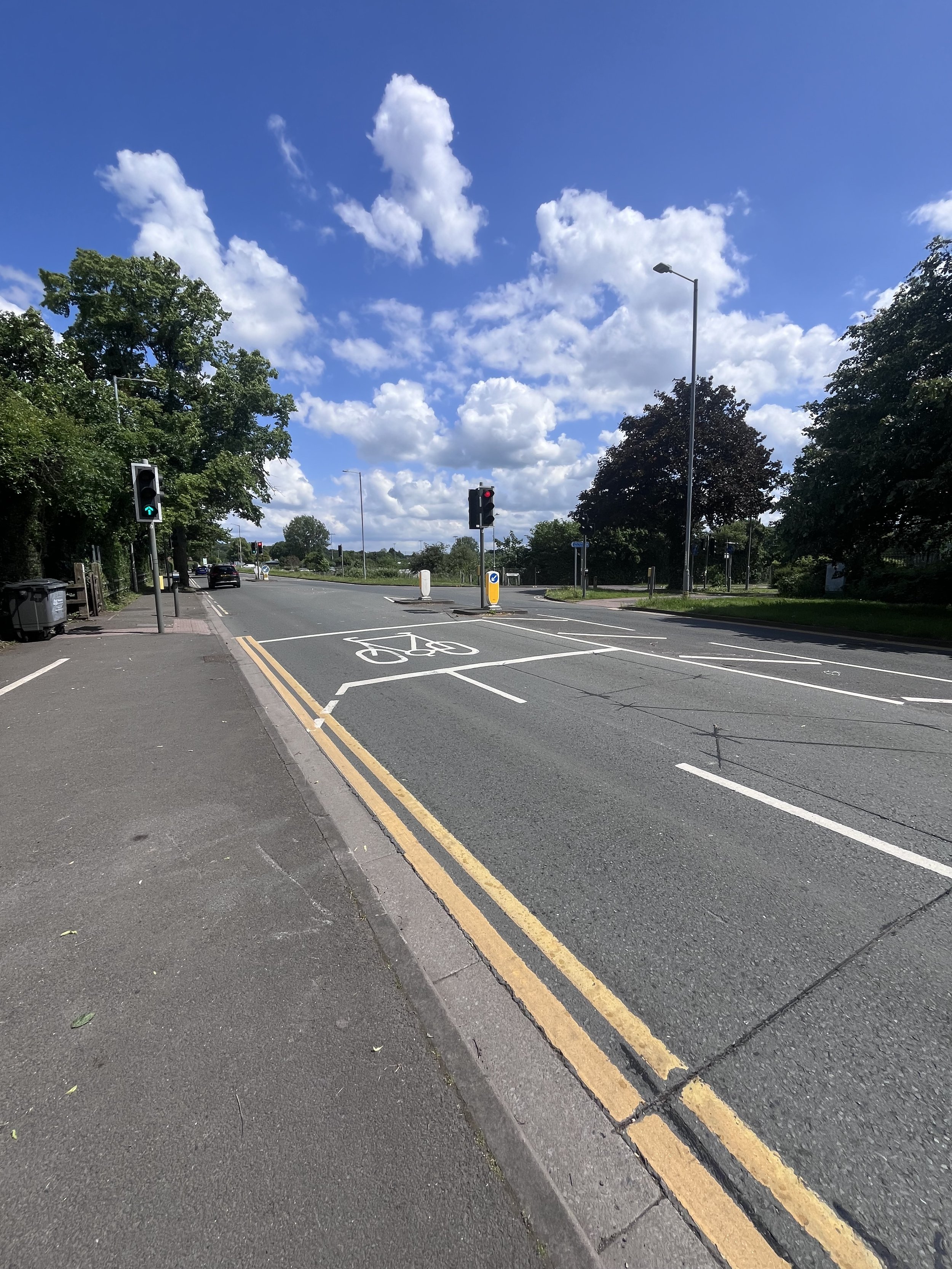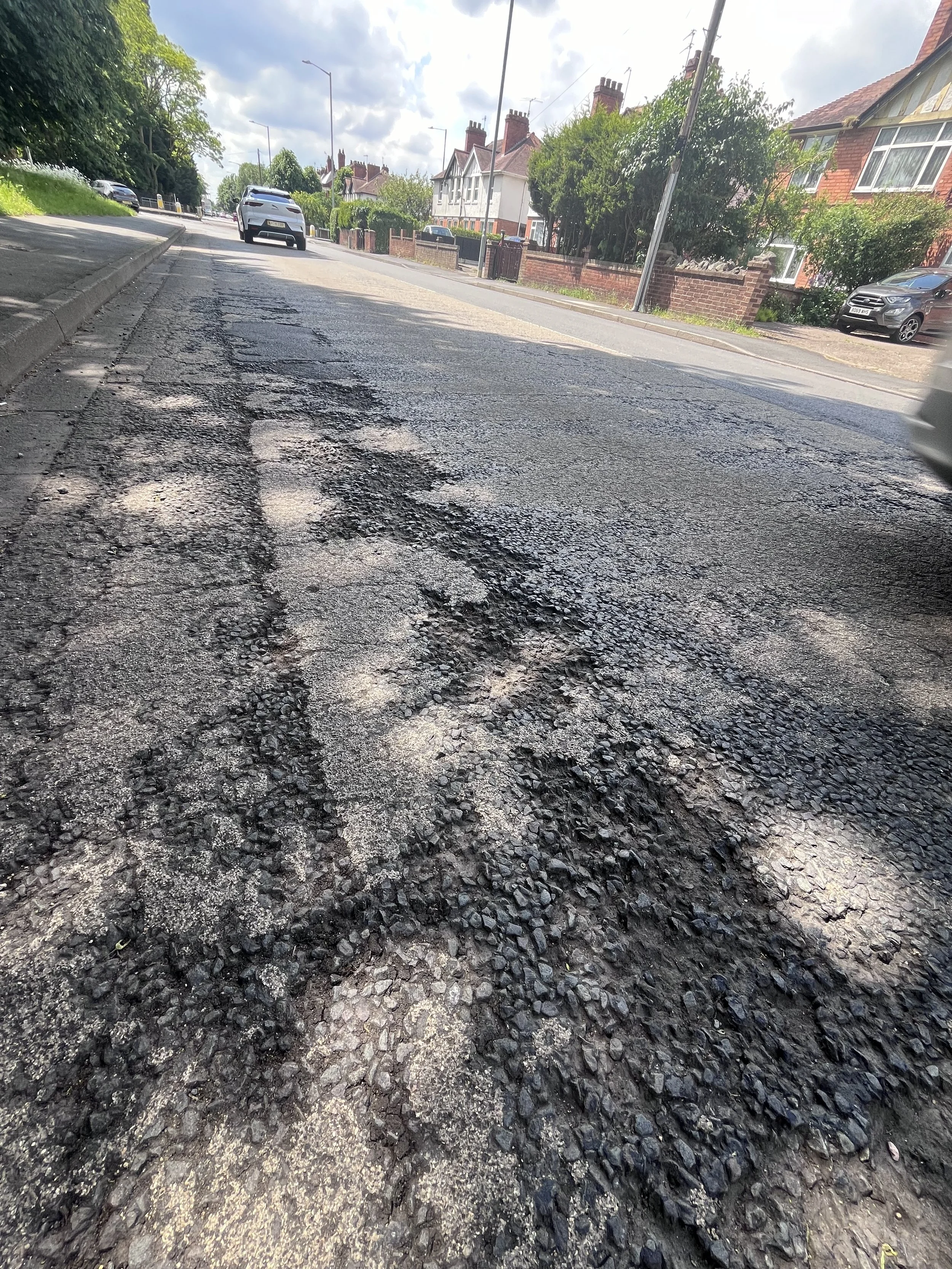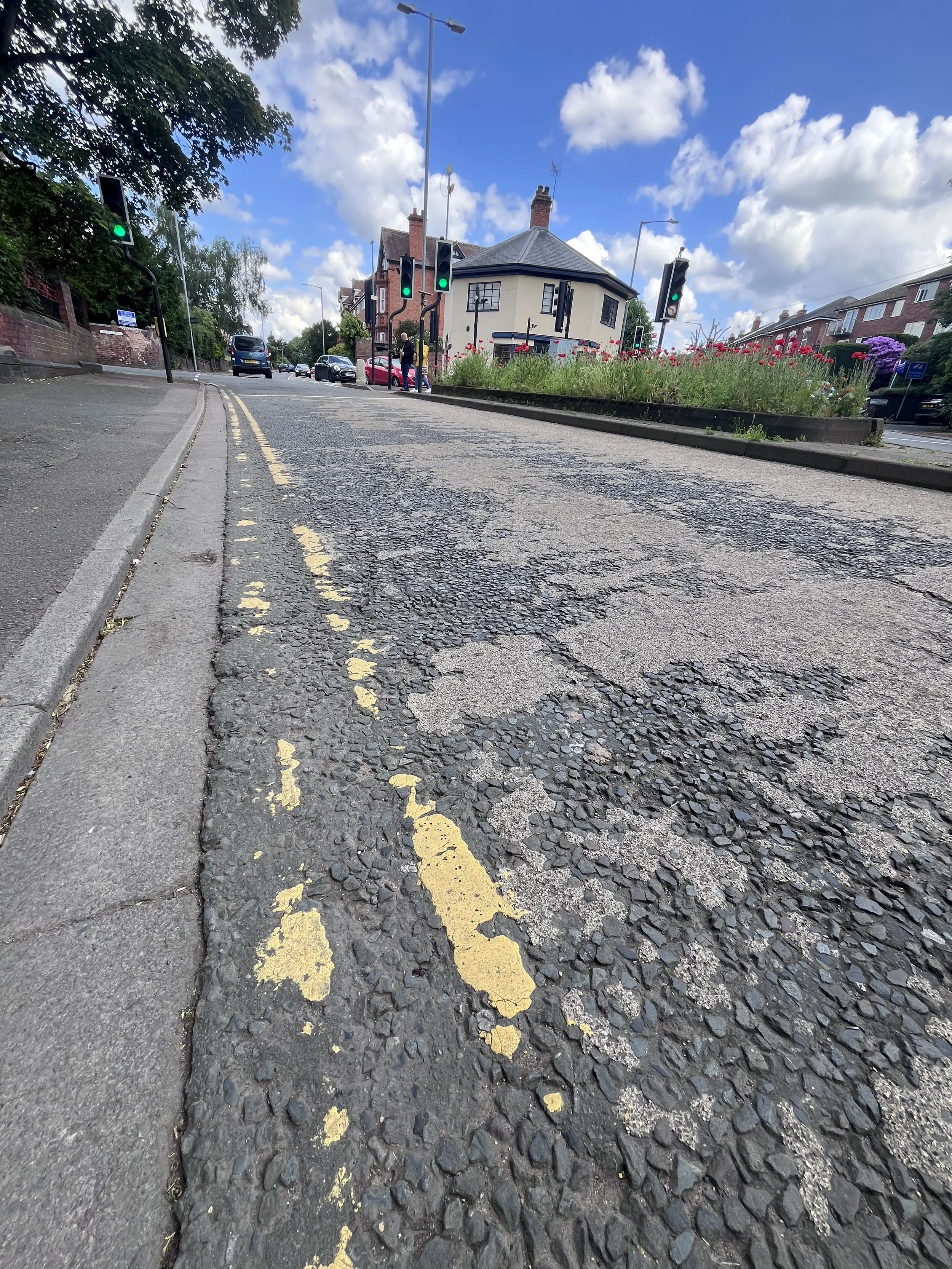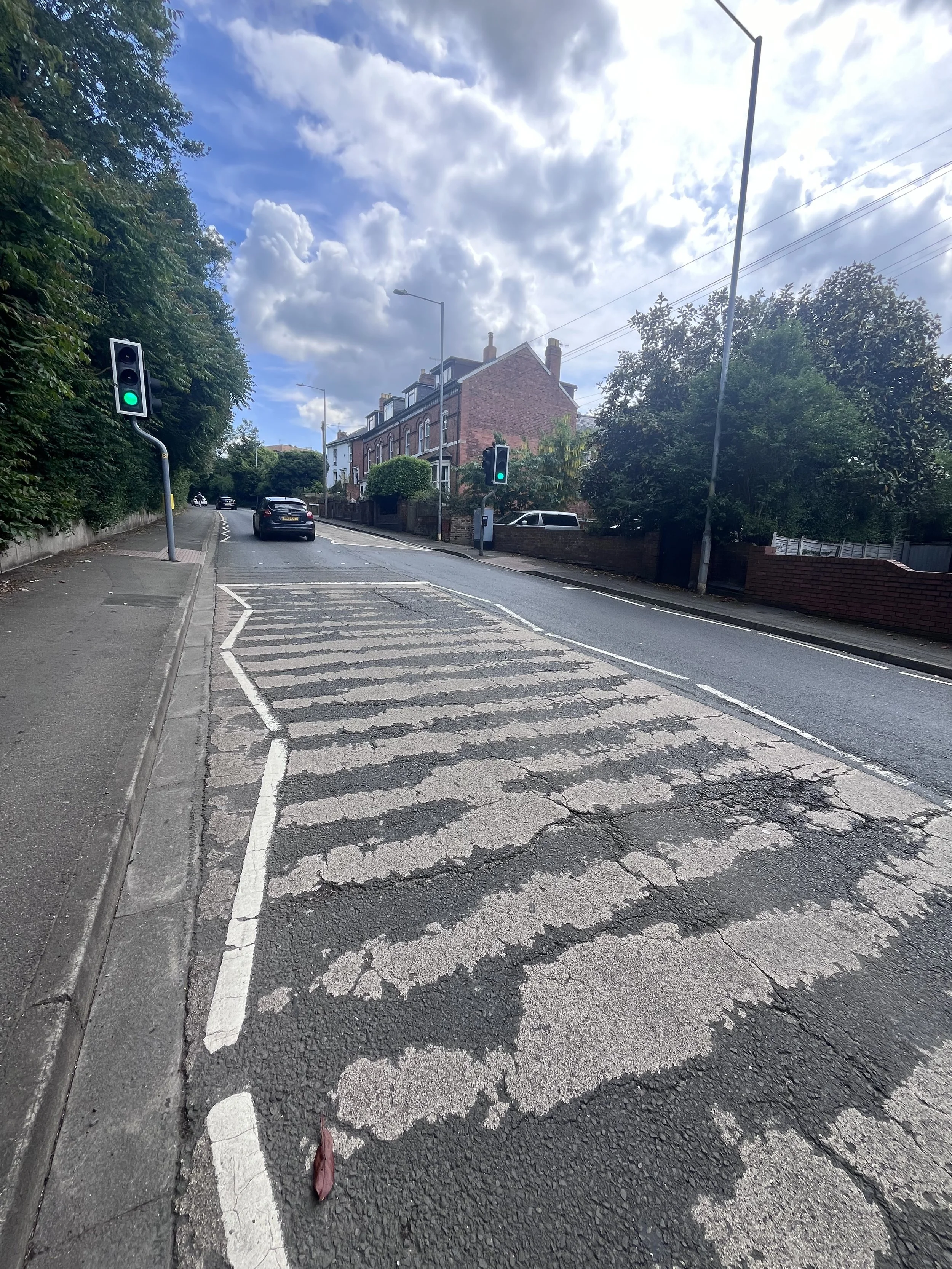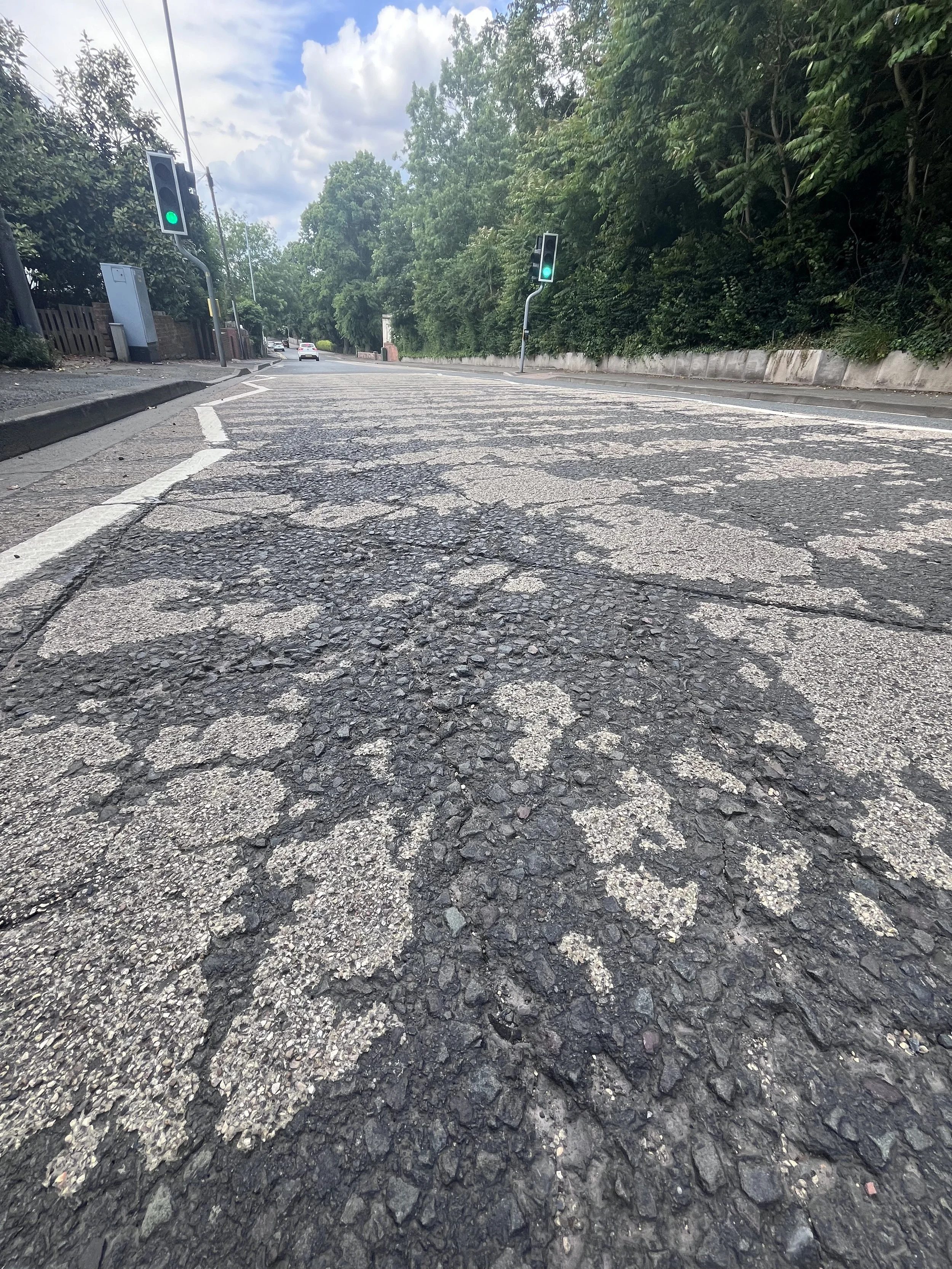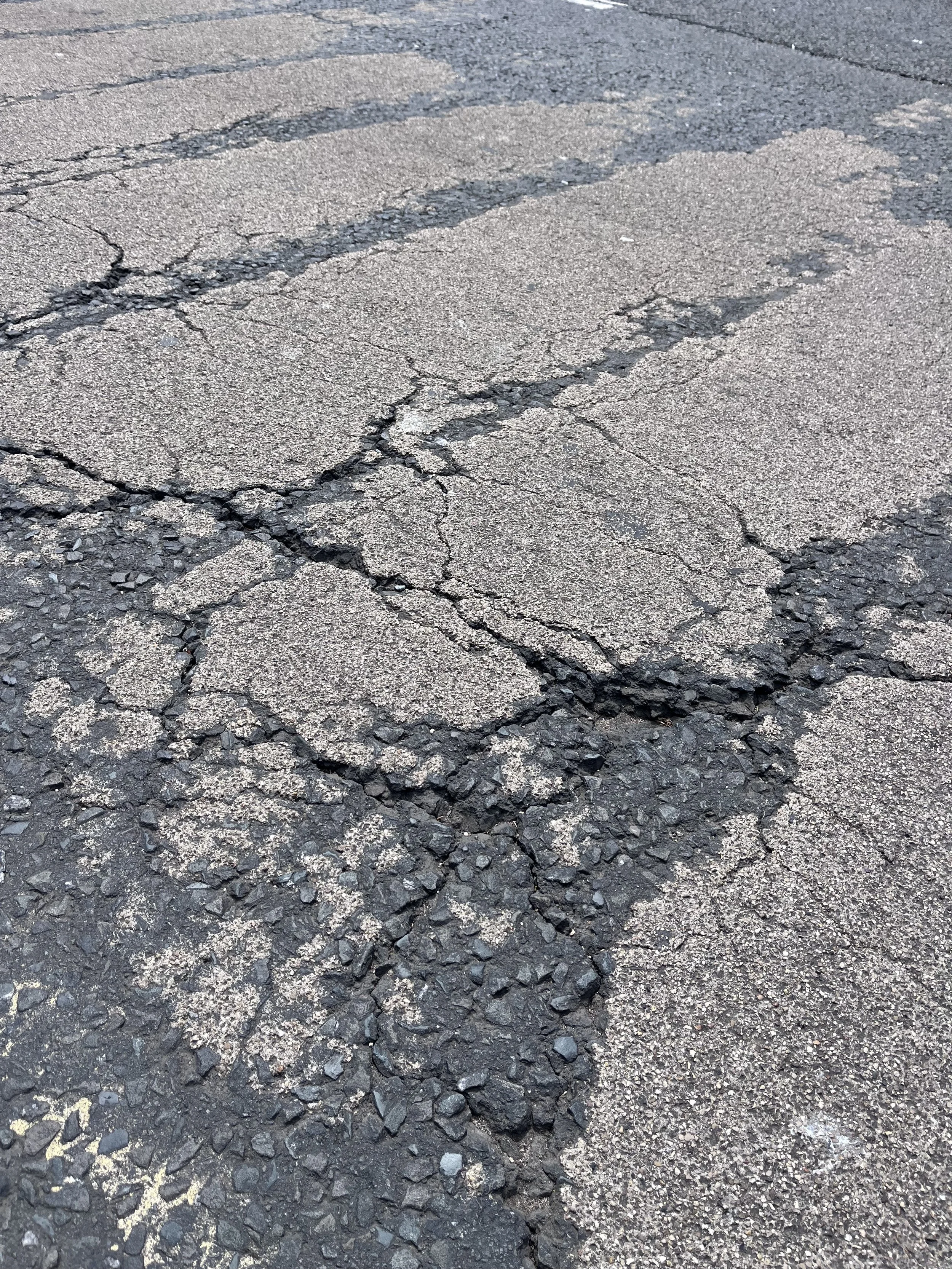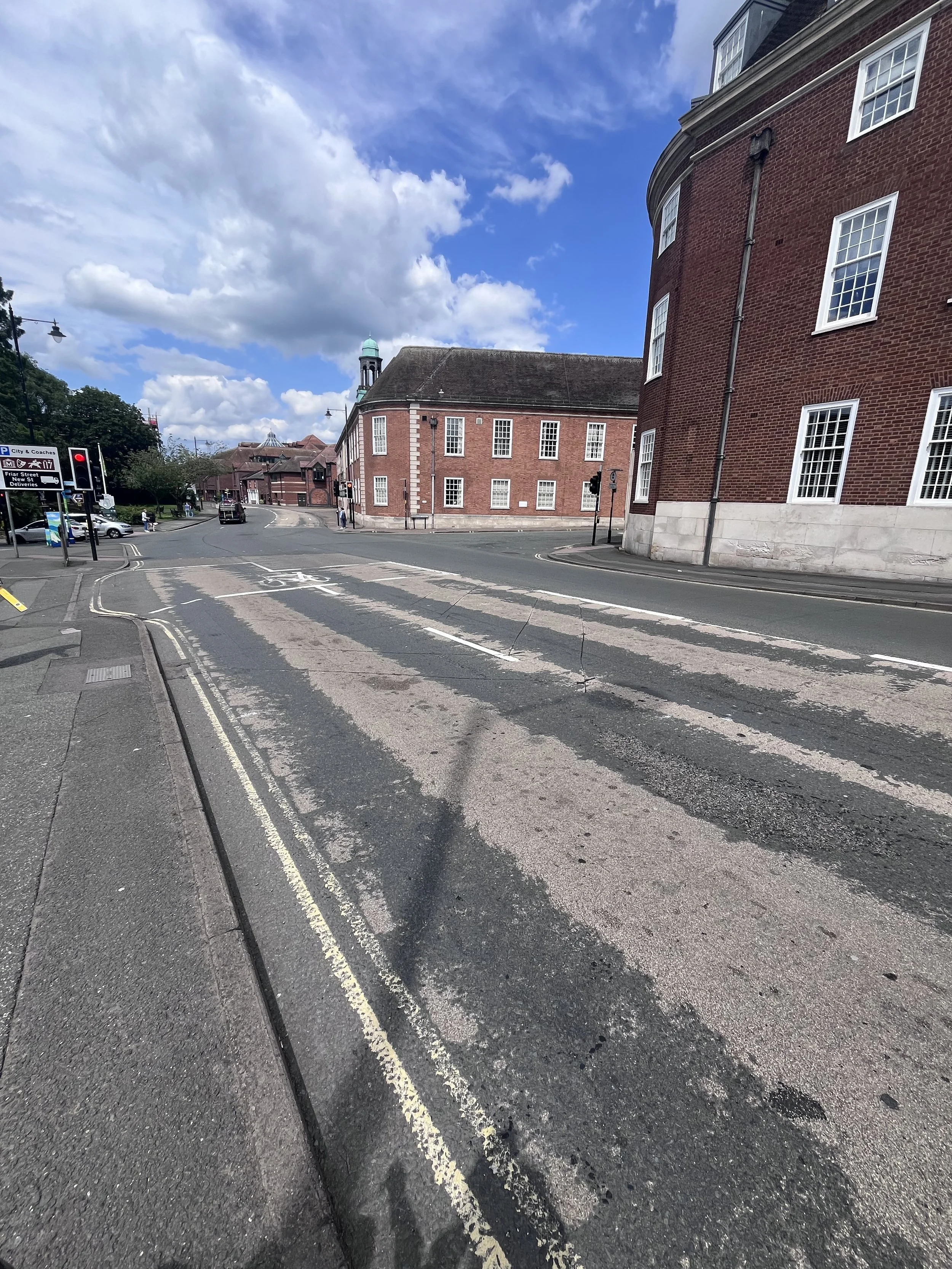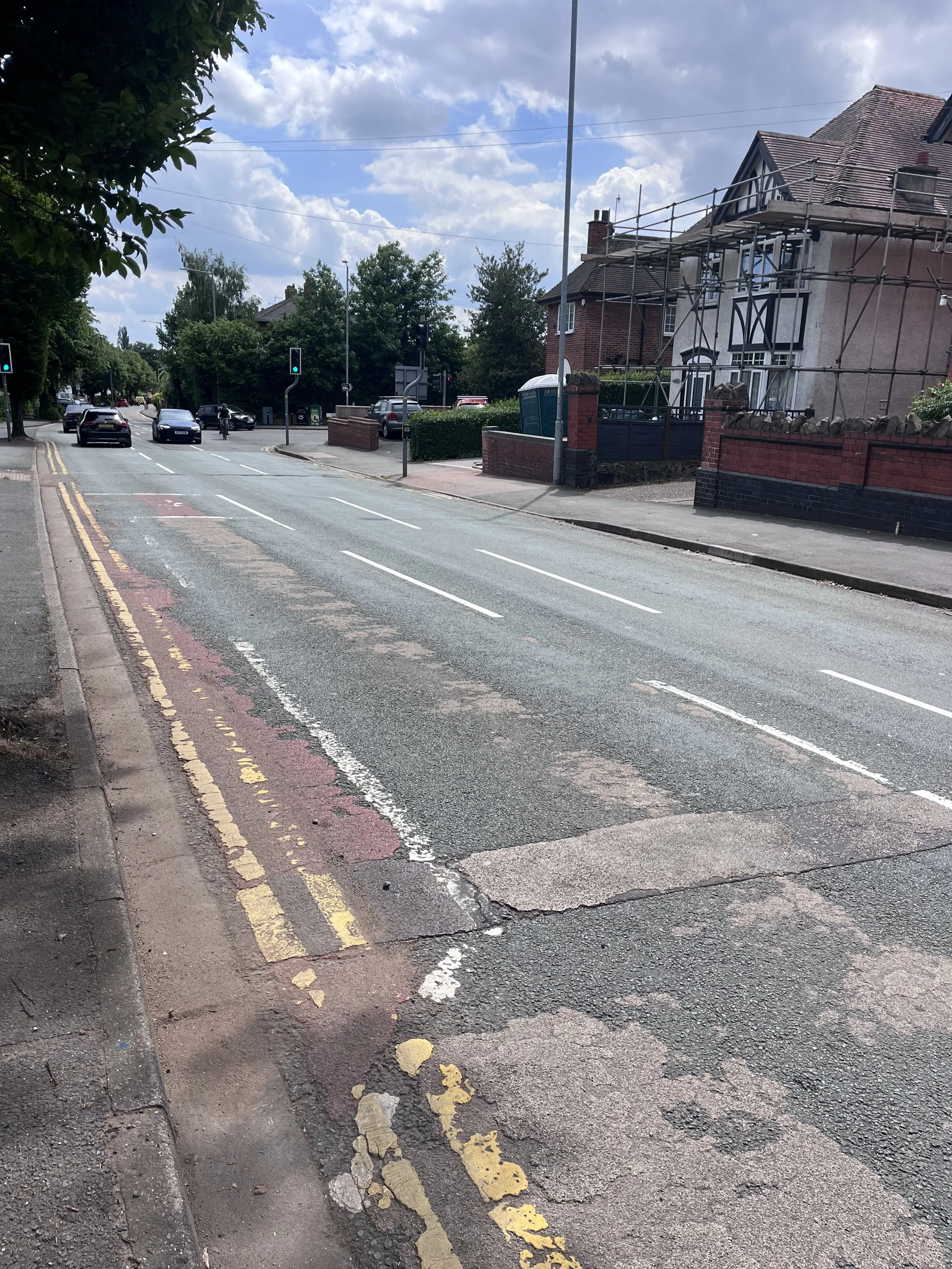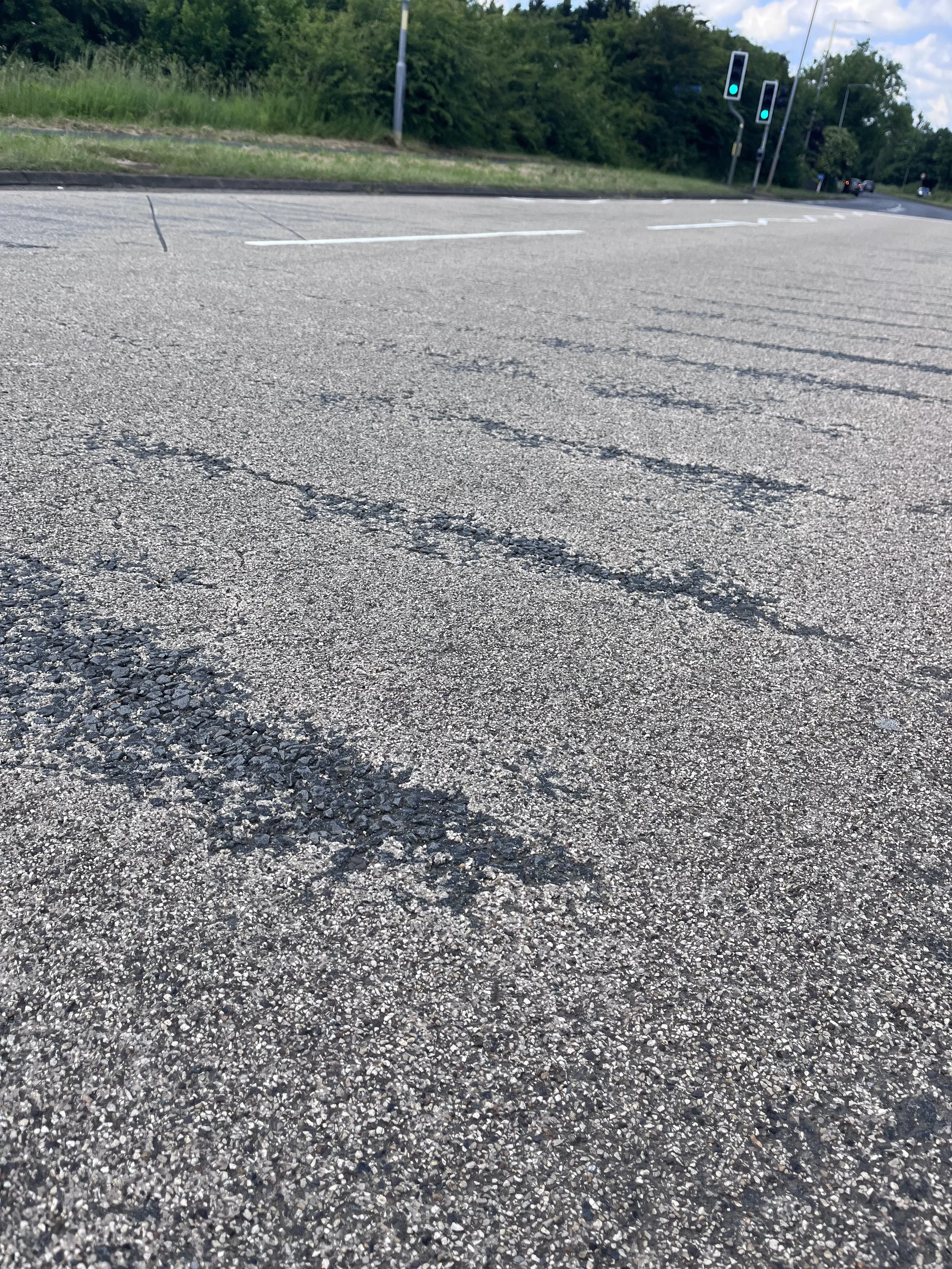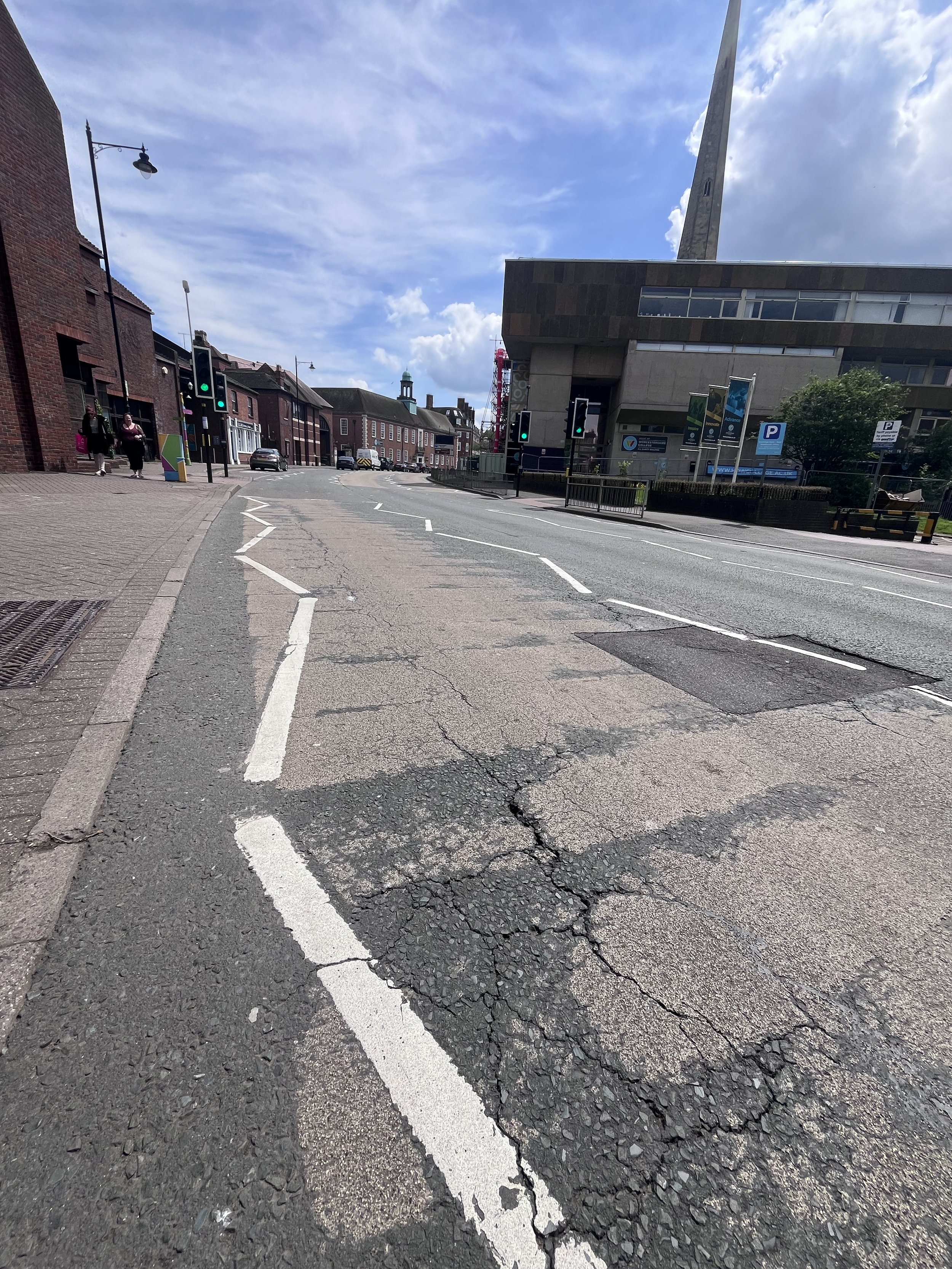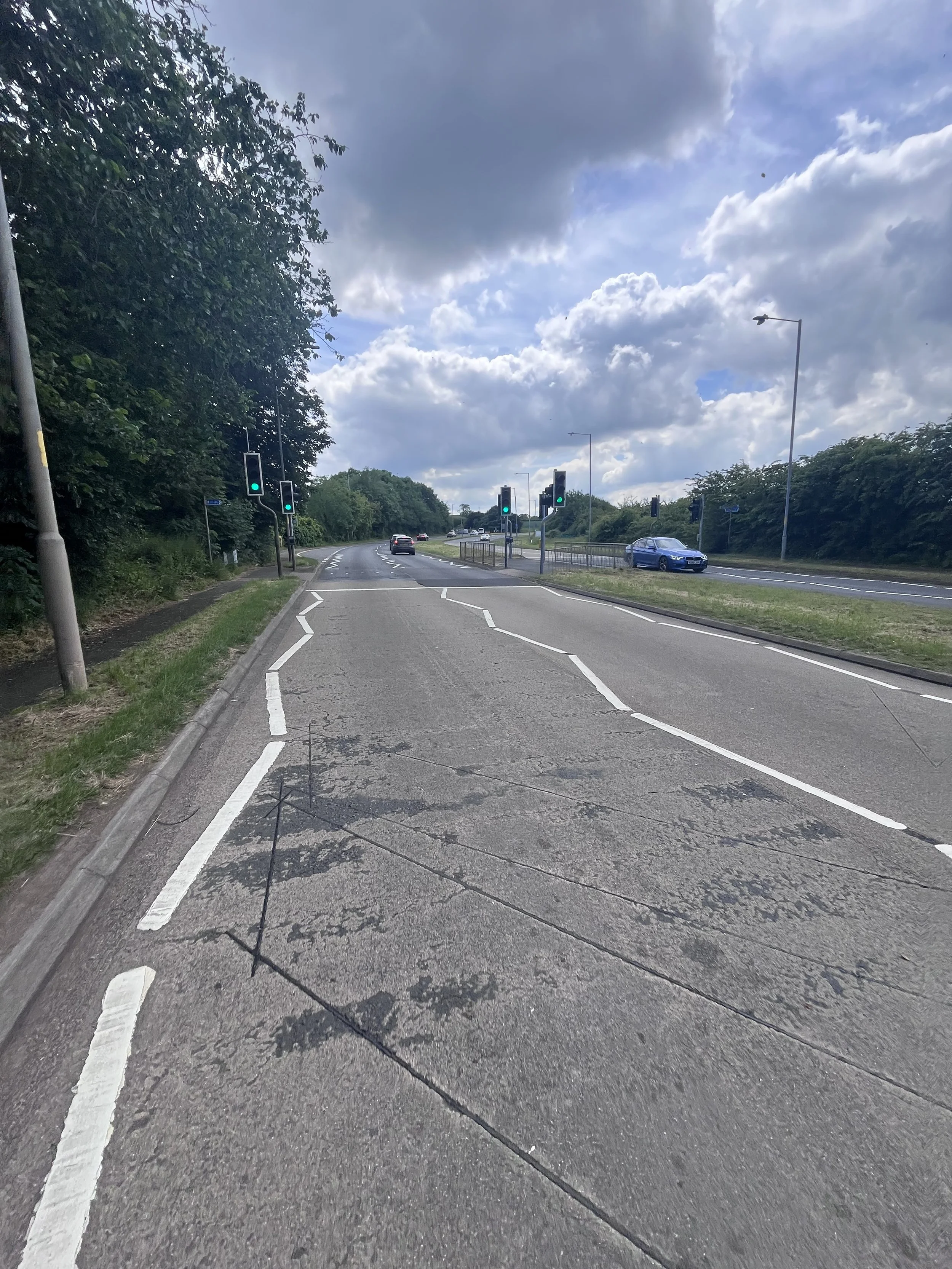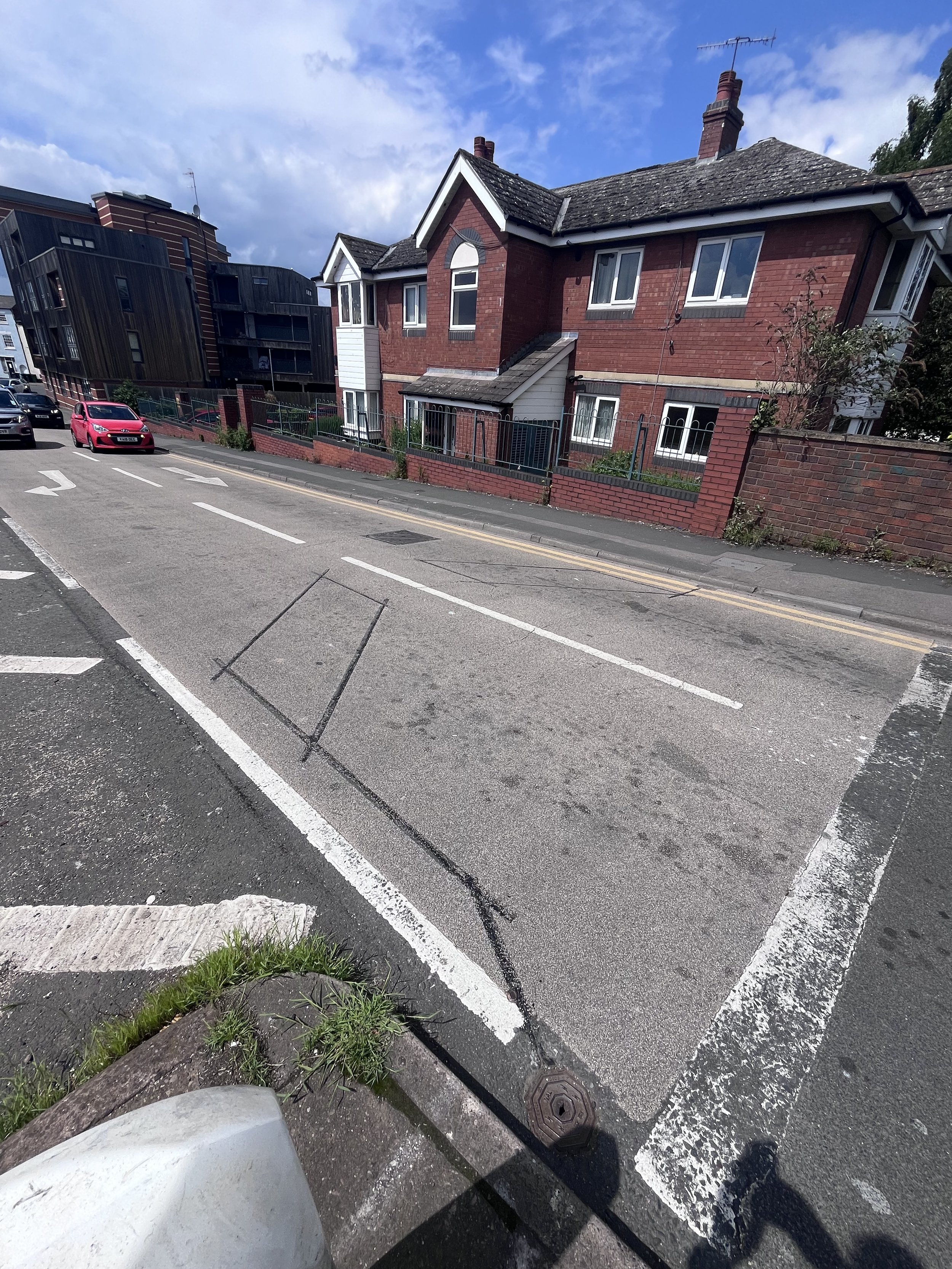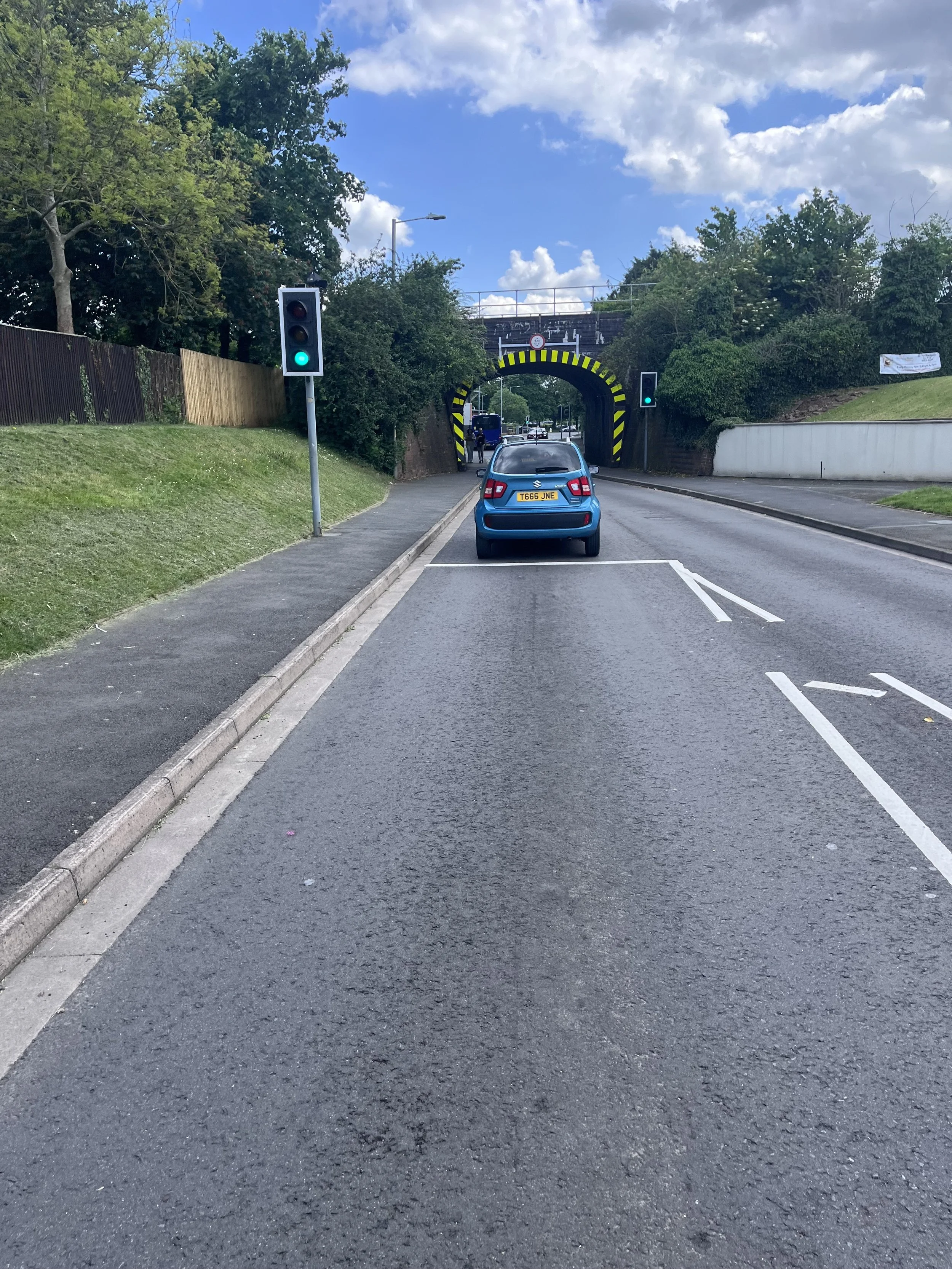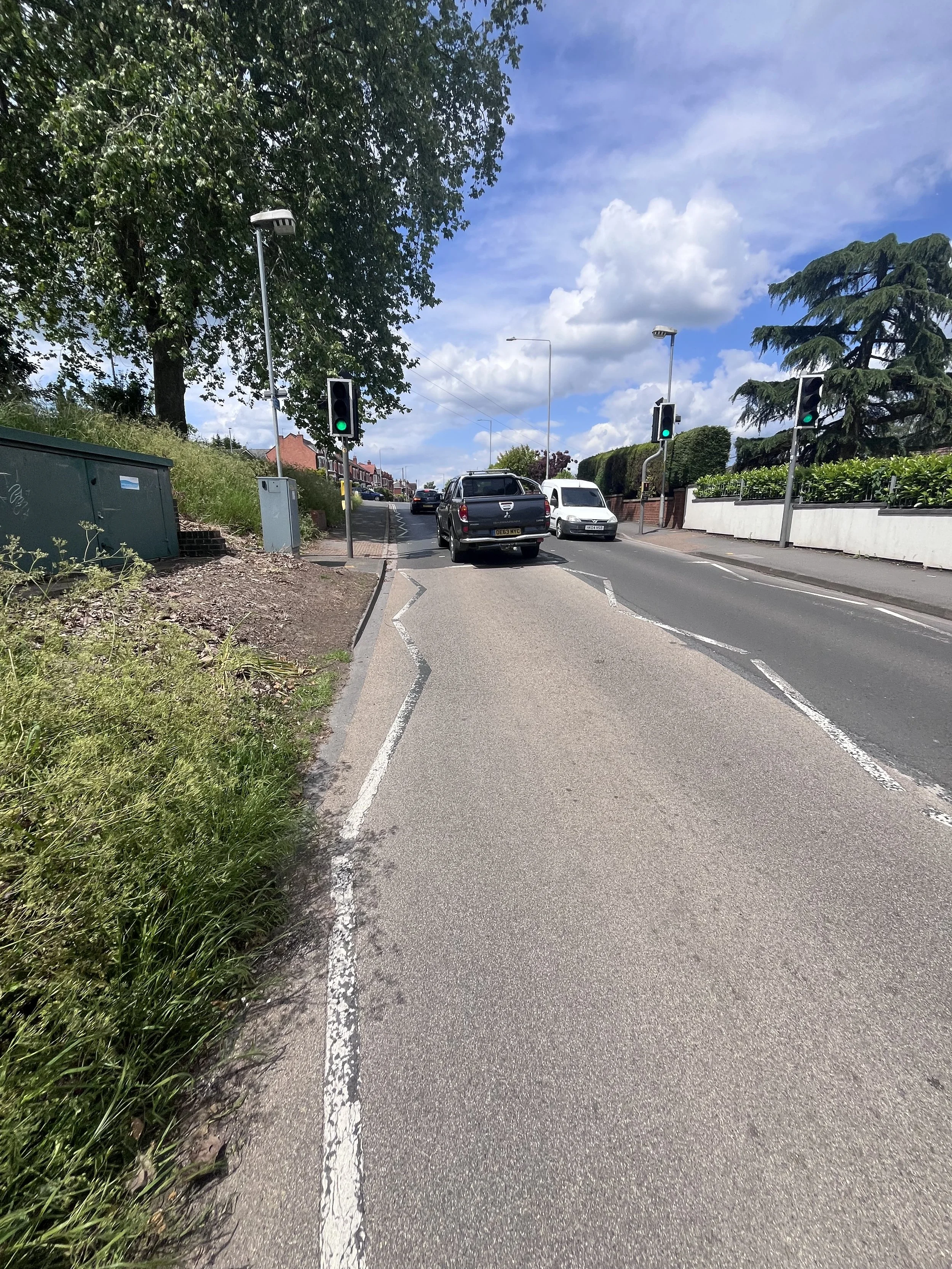Anti-skid road surfacing in Worcester: what’s the craic?
WARNING: THIS BLOG IS BORING.
Earlier this year I was asked by Worcestershire County Council to attend the Environment Overview and Scrutiny meeting, to participate with regard to an agenda item on active travel. I agreed to attend, and suggested that an invite was also extended to Sam Underwood (Powick Parish Councillor, Bike Worcester, musician(?)) and Katie Collier (Worcester City Councillor, Bike Worcester, Bike Bus supremo, Cycling UK 2023 100 Women in Cycling) to add some additional perspectives. On arrival we discovered that also invited was Robin Walker (Cycle Evesham Vale), another advocate for active travel in the County. Active Travel Advocates Assemble!
At this point I’m best keeping my summary of the meeting short. It was disappointing. If you’re a sucker for punishment you can watch the whole thing here. The active travel section starts at about 1 hour 10 minutes in, and you’ll have to wait until 1 hour 45 minutes before any of the active travel advocacy groups were invited to speak.
Perhaps there’s another blog about my thoughts on the meeting, and whether I would consider the whole process to be one of scrutiny, but it would most likely be boring, and that blog is not this blog.
Nope, I’ve been ruminating on this blog for who knows how long, and it will be quite possibly the dullest, most yawn inducing blog to date to make it into the Bike Worcester canon. However you can thank Cllr Marc Bayliss (recently appointed Cabinet Member with responsibility for Highways and Transport) for it’s production, because it was inspired by his fair words when commenting on how good the road maintenance and surfacing is in the County (without commenting on the almost non existence of segregated cycling infrastructure).
In fact, on this point I tend to agree with Marc. Travelling by bike is an excellent way to experience the quality of road surfaces, largely as a result of the speed of travel and the fact that the connectivity between front wheel, handlebars and hands is a great way to experience vibration, not to mention avoidance of larger potholes which could easily unseat a rider. Having covered most of the County’s roads (using VeloViewer as a resource) I can confirm that the County roads are pretty good, and on occasion the change in surface is of note as you travel over the County boundaries. However also of note (and pointed out by yours truly in the meeting) is that the inverse is true for the quality of cycling infrastructure, which gets markedly better outside of Worcestershire; this a topic for a future blog.
Anyhoo, something that’s bugged me for a while is a particular area where the road surface is sometimes not so great, and that’s where anti-skid surfacing is applied to the road. So I went on a study tour around Worcester, and took a few photos.
Before I get to my anecdotal findings I thought I’d share some more info from t’interweb, about the surfacing. After a bit of a nose I settled on this FAQ page about anti-skid surfacing from Landmark Road Lining. “Anti-skid surfacing is a type of surfacing material that is applied to areas that require high skid resistance. Also known as high-friction surfacing, it is mainly used for areas where safety needs to be enhanced to prevent collisions, such as car parks and junctions. Instead of a smooth and slippery surface, anti-skid surfacing provides a surface with much greater friction when compared to asphalt, which reduces stopping distance and improves grip.” The site goes on to recommend it’s use in key locations, including pedestrian crossings and junctions.
Having covered every road in Worcester on my bike (I know, super cool, right?) some of the worst surfacing appears to be in areas where the anti-skid surface has been applied, then has been eroded, which then seems to have an adverse effect on the asphalt beneath. In some cases the road becomes cracked leading to the development of potholes, in other cases the surface wears in strips running across the road, leading to notable vibration when cycling over the change in levels.
‘Jiminy Cricket, who cares?!’ I hear from the cheap seats.
Well, I’m wondering if we should all care. If the point is that this surface is installed to reduce Road Traffic Collisions (RTCs) and potentially save lives, I guess it should be installed consistently and be appropriately maintained, otherwise what’s the point of installing it at all? Secondly, if it isn’t essential, maybe a nice to have, a design choice by highway’s engineers, certainly not installed retrospectively, how about we sack it off, save the cash (hard-working tax payers I believe is the phrase), and spend it on something else like, err, I don’t know, removing metal barriers already installed on cycleways in the city, or maybe a communication campaign encouraging people to walk or cycle more, or maybe some segregated routes across the city centre?
In Worcester the anti-skid surface is often installed on the approach to pelican crossings:
But also often not installed on the approach to pedestrian crossings:
It appears on the approach to zebra crossings:
It also appears at some junctions, but interestingly applied on uphill approaches but not downhill approaches (this example on Tolladine Road / Shrub Hill Road):
It doesn’t appear on potentially higher risk crossings; this is North Parade, near the road bridge. It’s three lanes of traffic and downhill.
As a layperson, perhaps the most surprising location I found where it isn’t applied is this pedestrian crossing on Droitwich Road, adjacent to North Worcester Primary School with a 40 mph speed limit, used every Friday by one of the Bike Buses:
Anyway, here’s a selection of photos which show some of the surface wear and damage from locations across the city, including some where the surface is now barely visible, and some showing patch repairs of damage. If you’ve got anymore please let us know in the comments, and we can arrange for you image to be added to the gallery.
So what was the point of the blog? I guess I’d like to know a bit more about it. What is the selection criteria of where it is installed? Why does it appear to be poorly maintained, or is it incorrectly installed? Is it even a requirement, and is this an opportunity to save money that could be spent elsewhere (like active travel infrastructure)?
It would be wonderful if a Councillor would pick this topic up and have some conversations with officers, and maybe we can publish a blog with the response. Cllr Bayliss?


